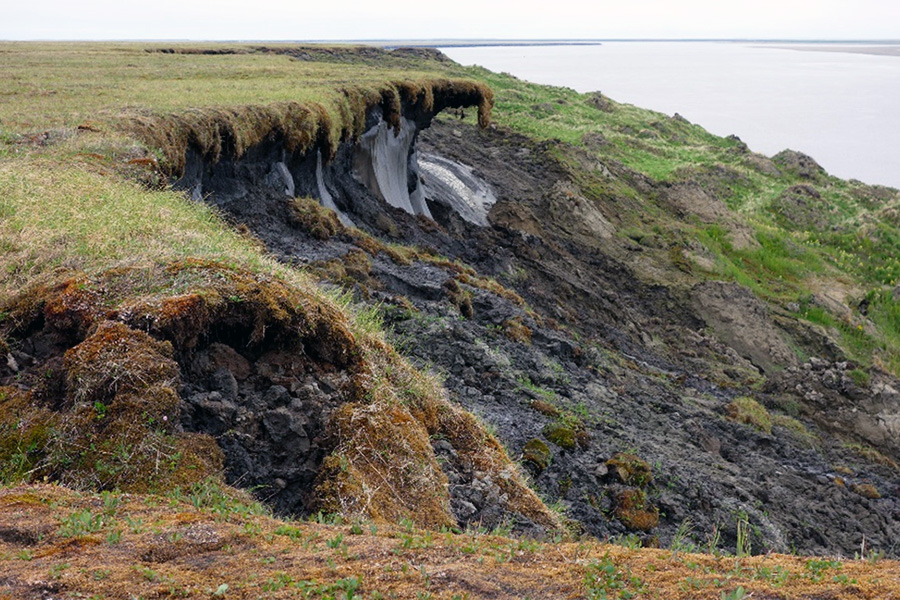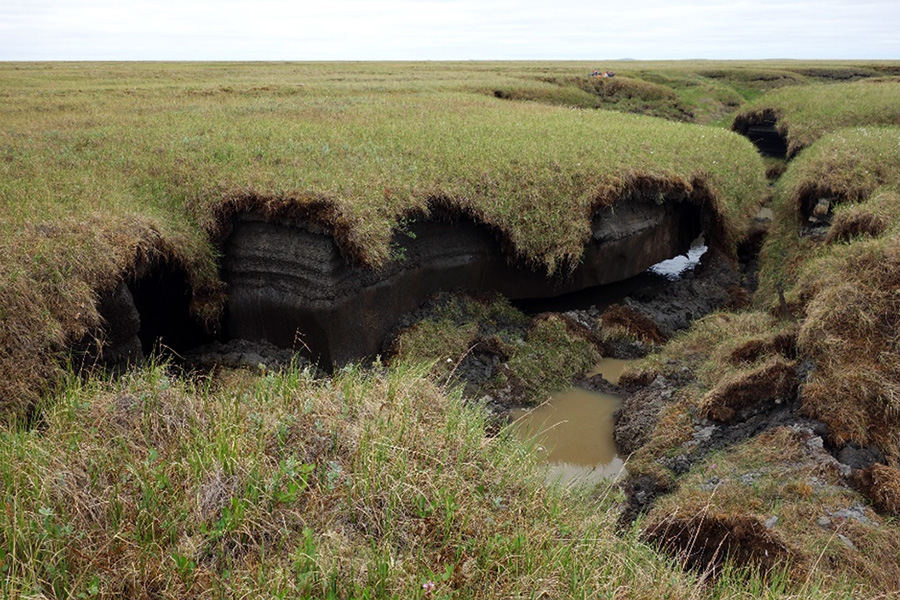Story Map »Shore Erosion«: Slide 4
Erosion Processes
Erosion stands in contrast to accumulation, representing the gradual degradation and transformation of landforms. In the previous section, we discussed the causes of shore erosion. But how does this erosion actually manifest in the landscape?
Kurungnakh Island, Lena Delta, Yakutia
In our first video, you can witness permafrost erosion on a Yedoma cliff on Kurungnakh Island in the Lena Delta, Yakutia. Samuel Stettner's timelapse, featuring one or two pictures per day, captures how the coastline eroded throughout July 2015.
Drew Point, Beaufort Sea, Alaska
In the second video, you’ll see a timelapse series documenting coastal bluff erosion along the Arctic Coast at Drew Point, Beaufort Sea, Alaska. This video, produced by the University of Colorado Boulder, covers the period from July 3rd to 26th, 2008, in two-hour intervals. By clicking the image, you agree to load the YouTube video, which may set third-party cookies.

When large blocks of land collapse into the ocean
The warming and thawing of permafrost accelerates as both air and sea surface temperatures rise. This triggers various processes, including ground subsidence, thermo-erosion, block failure, slumping, and cliff formation. In all of these processes, the ice content of the permafrost, the composition and texture of the soil, the speed and intensity of warming, and the resulting loss of soil stability play a crucial role.
Here you find two examples from the Lena Delta, click on the headings below:


Accumulating sediment can create barrier islands
When coastal and river erosion mobilize large amounts of sediment, this material is transported into the coastal ocean. Carried by nearshore currents, the sediment begins to accumulate in specific areas, often close to the coast. Over time, this accumulation can lead to the formation of beaches, beach ridges, barrier islands, or deltas.
Thermokarst lagoons form along ice-rich permafrost coasts
In addition to shoreline erosion, processes such as lagoon formation, marine flooding, and sea-ice erosion also play a significant role in shaping coastal landscapes. These processes are triggered by site-specific parameters, such as wave action that erodes the shore, and physical drivers, including more frequent and intense storms, rising sea levels, and reductions in sea-ice extent, thickness, and duration.
